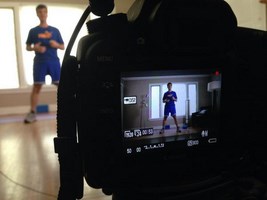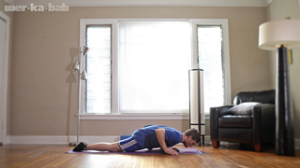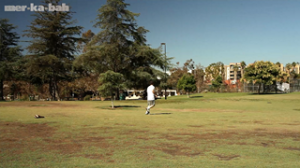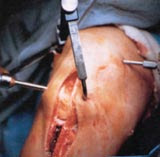 Every January I write out my goals for the year (I told you all about it here). One of my missions for 2014 was to find a way to get my wealth of knowledge on exercise physiology and technique out to more people. I have been deeply involved in the sports injury world for the last fifteen years, exposed to and trained in the most cutting-edge sports rehab practices available today. I have worked with professional athletes and dancers for over a decade. And for the last five years I have been able to share this knowledge with a select few thousand professionals—mostly in the chiropractic reeducation arena.
Every January I write out my goals for the year (I told you all about it here). One of my missions for 2014 was to find a way to get my wealth of knowledge on exercise physiology and technique out to more people. I have been deeply involved in the sports injury world for the last fifteen years, exposed to and trained in the most cutting-edge sports rehab practices available today. I have worked with professional athletes and dancers for over a decade. And for the last five years I have been able to share this knowledge with a select few thousand professionals—mostly in the chiropractic reeducation arena.
But one thing I was able to do rather effectively within my practice was to create simplified programs that I could teach to anybody; athletes, yes, but also everyday people—stressed out entrepreneurs, professionals with little time for the gym, stay-at-home moms, people who had never exercised a day in their life, elderly folk who thought it was a laugh that I would even suggest exercise to them—would be amazed at how simple and effective my programs were. And because these programs were progressive, the farther my client would want to go, I would have another graduating level for them, and their strength, endurance and flexibility would expand.

So as I do every year, I read and reread my goals, and lo-and-behold come summer I was approached by the UK based company, mer-ka-bah, whose mission it is to provide hi-quality, self-empowering, life-changing online courses taught by a group of international instructors for a world-wide audience. After discussing the company’s purpose and direction, I knew my exercise programs were perfect for the mer-ka-bah mission: To provide tools to support people in implementing and sustaining life-long, positive behavior change…“Tiny Habits” coaching in how to build new, sustainable habits leading to life-long behavioral changes…As they told me, “Small Steps – Big change.”
 Indeed! And that matched perfectly with what I have to offer in the form of exercise programs. I envisioned taking people from the ground up, from the level of the smallest, most fundamental stabilizer muscles to the complex muscle movements we call compound movements, with the idea that anybody taking the program could be assured gains in strength, endurance and flexibility with the lowest risk of injury. It was a simple thought to me: One of my most common client-type is the injured amateur athlete, and those injuries are usually a result of three things:
Indeed! And that matched perfectly with what I have to offer in the form of exercise programs. I envisioned taking people from the ground up, from the level of the smallest, most fundamental stabilizer muscles to the complex muscle movements we call compound movements, with the idea that anybody taking the program could be assured gains in strength, endurance and flexibility with the lowest risk of injury. It was a simple thought to me: One of my most common client-type is the injured amateur athlete, and those injuries are usually a result of three things:
- Poor form
- Deconditioned stabilizer muscles
- Hyper-contracted and tight muscles
My mer-ka-bah course, From Couch Potato To Fitness Dynamo In 7 Expertly Guided Steps, addresses and corrects these issues while teaching the viewer fundamentals of stretches, strengthening contractions and cardiovascular activity. Watch the video below to understand exactly why you should take this course, and then sign up for the most cutting-edge, scientifically proven exercise technique program you will find on the web.



















